Embibe Experts Solutions for Exercise 3: Exercise 5.3
Embibe Experts Physics Solutions for Exercise - Embibe Experts Solutions for Exercise 3: Exercise 5.3
Attempt the practice questions from Exercise 3: Exercise 5.3 with hints and solutions to strengthen your understanding. Gamma Question Bank for Engineering Physics solutions are prepared by Experienced Embibe Experts.
Questions from Embibe Experts Solutions for Exercise 3: Exercise 5.3 with Hints & Solutions
A simple pendulum consists of a mass attached to a string. It is released from rest at as shown. Its speed at the lowest point is
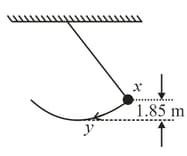
A block is released from rest at point and slides along the frictionless track shown. At point its speed is
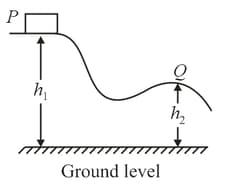
A ball is held at a height above a floor. It is then released and falls to the floor. If air resistance can be ignored, which of the five graphs below correctly gives the mechanical energy of the Earth-ball system as a function of the altitude of the ball?
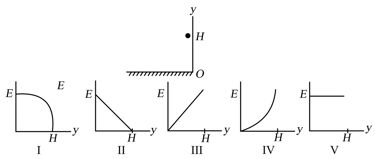
The potential energy of a particle moving along the -axis is given by where is in joules and is in meters. If the total mechanical energy is the limits of motion are
The graphs below shows the force acting on a particle when it moves along the positive -axis from the origin to The force is parallel to the -axis and is conservative. The maximum magnitude has the same value for all graphs. Rank the situations according to the change in the potential energy associated with the force, least (or most negative) to greatest (or most positive)
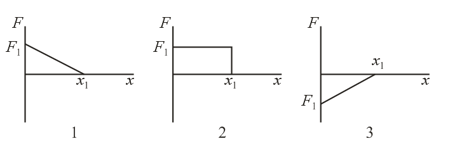
A particle is released from rest at the point and moves along the -axis subject to the potential energy function shown. The particle
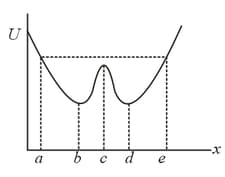
The diagram shows a plot of the potential energy as a function of for a particle moving along the -axis. The points of stable equilibrium are
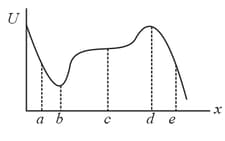
The first graph shows the potential energy for a particle moving on the -axis. Which of the following five graphs correctly gives the force exerted on the particle?

